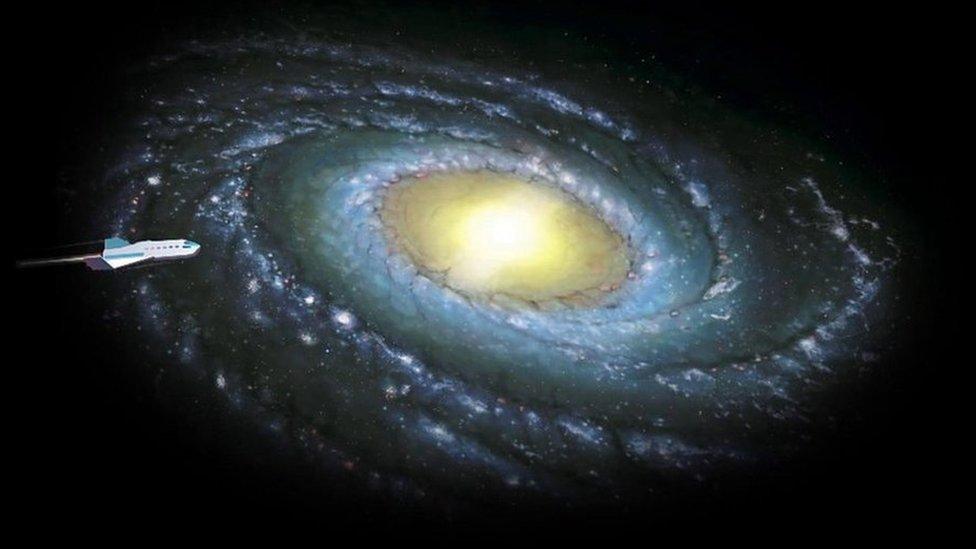Hubble: 30 years since the telescope sent first image back to Earth!
- Published
- comments
Space scientist Dr Maggie Aderin-Pocock tells us why the Hubble Space Telescope is so important
On 20 May it is 30 years since the Hubble Space Telescope sent its first images back to Earth from space.
The telescope was launched on 24 April 1990, and is one of Nasa's most important research tools.
Floating 350 miles above our heads, Hubble has beamed back images that are not only incredible to look at, but have completely changed our understanding of the universe!
From discovering that black holes exist, proving that space isn't empty, and helping to find new planets, the Hubble Telescope has been behind some amazing discoveries.
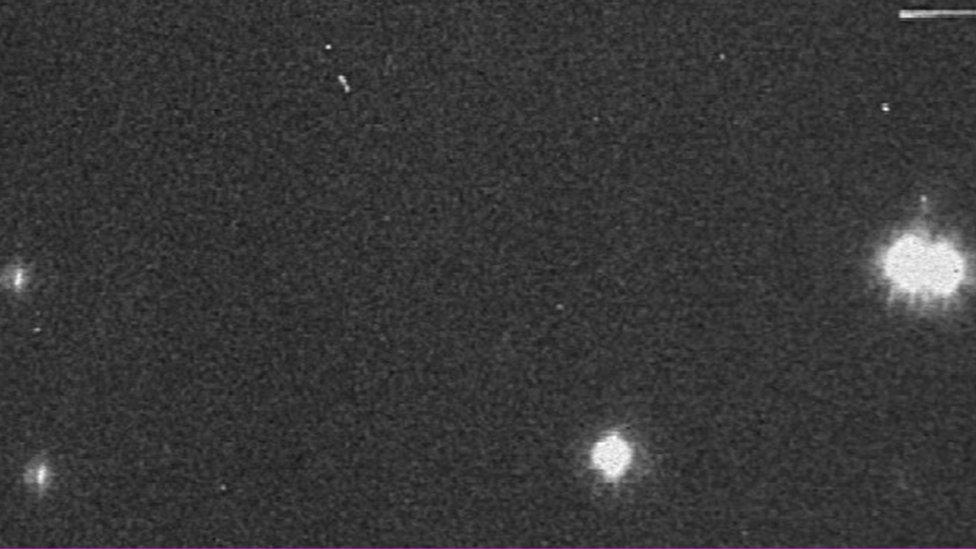
This is the first image sent back from the Hubble telescope, although it was blurry the fact that it could be sent from space to Earth was a massive scientific achievement
Kathryn Sullivan, one of the astronauts who helped to get Hubble into space in 1990, said: "Hubble's scientific impact has just been immense."
Here are some of our favourite facts about the telescope and some of those discoveries.
We all make mistakes...
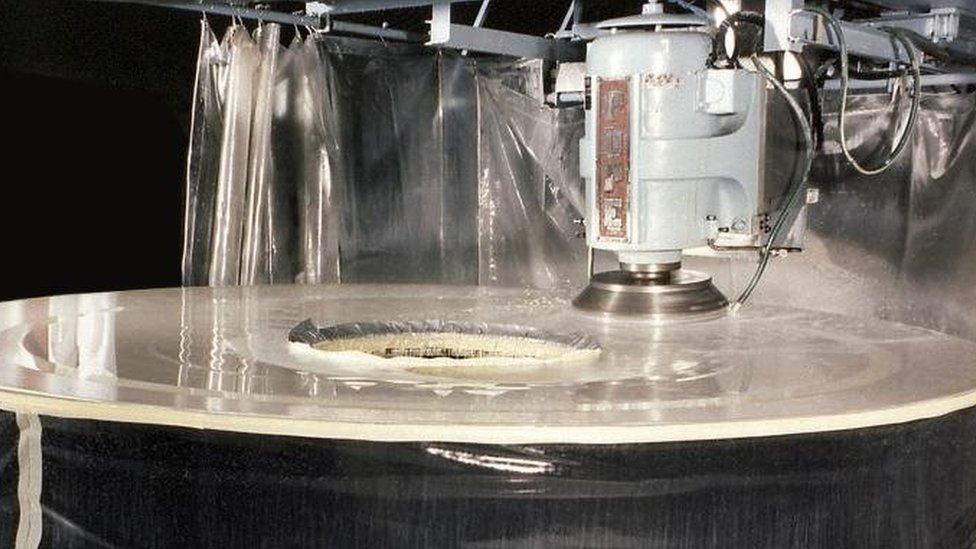
This mirror was the cause of a bit of trouble for the Hubble
After the telescope was launched, scientists waited in excitement to see the first images it sent back.... only to find that they were blurry. Not a great start!
The scientists launched an investigation to find out what had caused the problem, and discovered that it was the telescope's mirror.
Hubble uses a big curved mirror lens to help it take pictures, but unfortunately when it was being made, the edge of the mirror had been ground down too flat by a depth of four microns (that's around one-50th the thickness of a human hair!).
Three years later a group of astronauts were launched into space to help fix the telescope.
It took two teams of two astronauts, five spacewalks and more than 35 hours to fix the lens, and add some new upgrades to the telescope!
A few weeks later Nasa shared this incredible comparison image of the M100 galaxy, which is thought to be tens of millions of light years away, to show the difference a few microns can make!
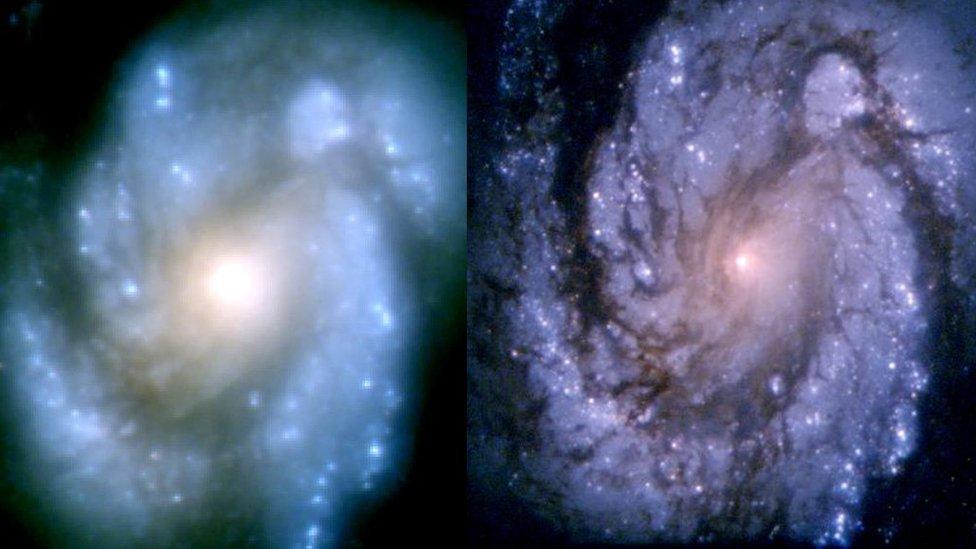
The picture on the left was taken with the old lens, and the picture on the right was taken with the new lens
How old is the universe?
Before the telescope launched, astronomers could only estimate that the universe was somewhere between 10 billion and 20 billion years old.
By measuring the brightness of stars millions of miles away, scientists were able to work out the age of the universe with much greater accuracy.
They now think the universe is 13.8 billion years old, give or take a few years.
The Hubble Telescope was named after famous astronomer Edwin Powell Hubble. He discovered that our galaxy, the Milky Way, was just one of many galaxies in the universe, changing the way we thought about space!
The image that changed the world
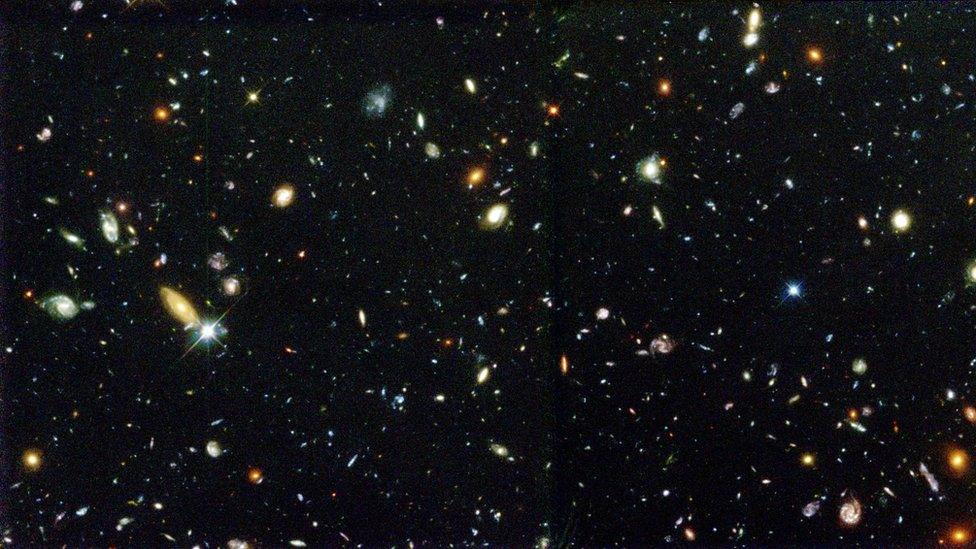
This revolutionary image changed the way we thought about space
On 15 January 1996 the Hubble Space Telescope's Deep Field Image was revealed at the 187th American Astronomical Society meeting, astounding astronomers and people all over the world.
Scientists took 342 pictures over 10 days, of a patch of space that they thought was completely empty.
The image that was shared was the most detailed picture of our universe ever taken, revealing around 3,000 distant galaxies!

This new picture revealed thousands more galaxies!
Almost a decade later in 2004, a second picture was taken, becoming the deepest portrait of the universe ever achieved.
It was called the Hubble Ultra Deep Field (HUDF), and contained around 10,000 different galaxies!
It took a million seconds to expose, and is actually made of two separate images.
The Hubble Telescope also found the farthest star ever seen?! Nicknamed Icarus, it is located around 5 billion light-years away.
Black holes are real!
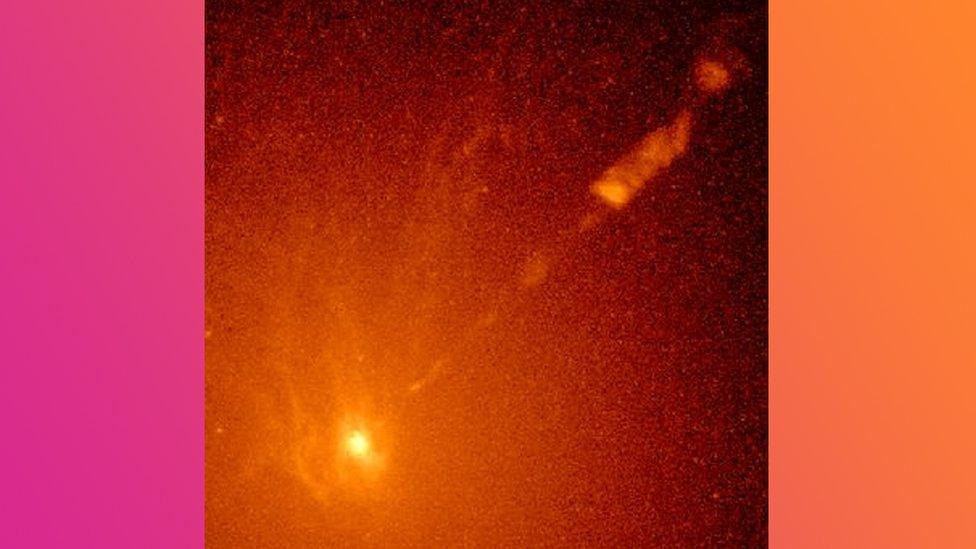
This picture is of the M87 galaxy
In May 1994 the Hubble Telescope confirmed that black holes existed.
Before that, black holes were just the stuff of theories - but now, scientists had "conclusive evidence".
Astronomers took a picture of the Messier 87 galaxy, located around 54 million light-years away from Earth.
The Messier 87 galaxy was where the first official photo of a black hole taken, 25 years after they were proven to exist!
What they discovered was an object at the centre of the galaxy weighing as much as three billion Suns, but squeezed into a space no bigger than our solar system.
These were the tell-tale signs of a black hole - an object that is so massive, yet compact, that nothing can escape its gravitational pull, not even light.
Scientists all over the world were overjoyed by the news!
Is there life out there?
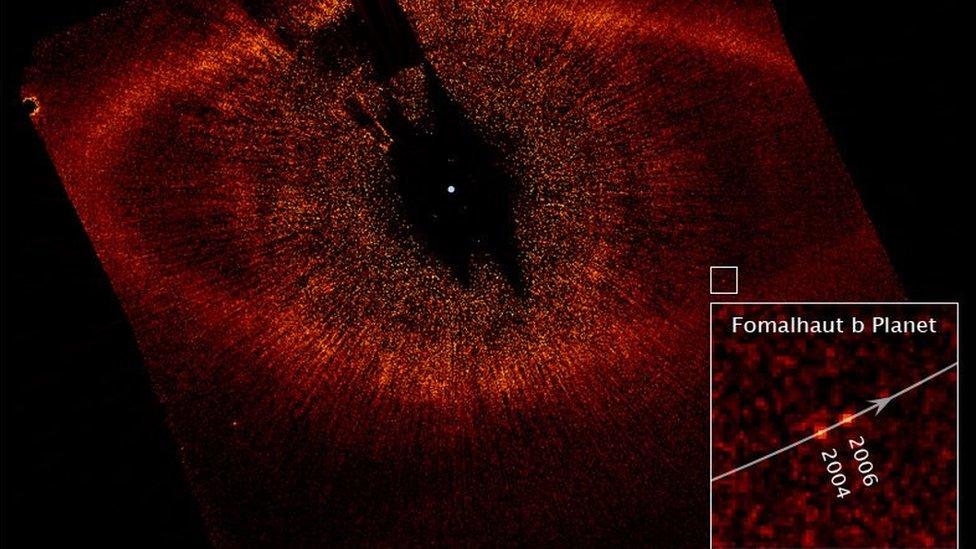
Using the Hubble Telescope, astronomers were able to take the first visible-light picture of a planet orbiting a different star, in a different solar system than our own - yep an alien planet - or exoplanet as they're also known.
The planet called Fomalhaut b, is located around 25 light-years away in the constellation Piscis Australis.
Hubble helped us to learn more about our own planets! It showed us a comet hitting Jupiter, a storm on Saturn and gave us our first proper look at Neptune and Pluto.
Since then, around 4,000 exoplanets have been discovered!
Astronomers even discovered a planet in 2019 called K2-18b, which has water vapour - an important factor for the potential of life.
What is dark matter?

This picture of the 'bullet cluster' changed how scientists thought about dark matter
Something that had confused scientists for a while was dark matter.
Less than 5% of the universe is classed as 'normal matter'- things like protons, neutrons and electrons, which make up stars, gas and dust.
So scientists were confused what the other 95% was.
It turned out to be around 68% 'dark energy' and 27% 'dark matter'.
Dark matter is particles which do not reflect, absorb or give off any type of light.
Scientists only became aware of it by looking at the impact it has on other normal matter and light - but many people doubted its existence at all.
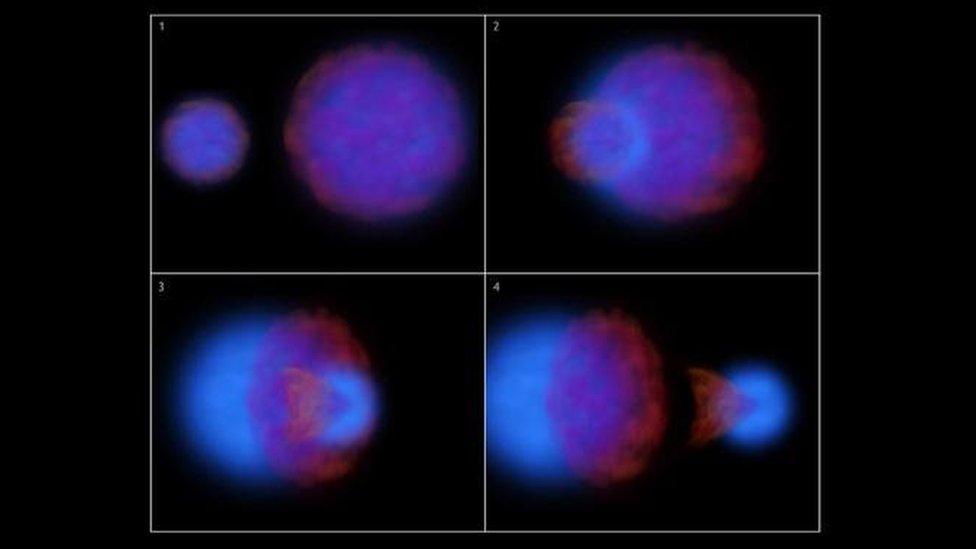
This artist's impression shows how the dark matter (in blue) might move
In 2006 Hubble teamed up with the Chandra X-Ray Observatory to take a picture of a galaxy cluster called the Bullet Cluster.
What they discovered was that without the existence of dark matter holding them together, the galaxies would have quickly flown apart.
So dark matter is like an invisible glue which holds the universe together! Pretty cool stuff!
- Published16 February 2020
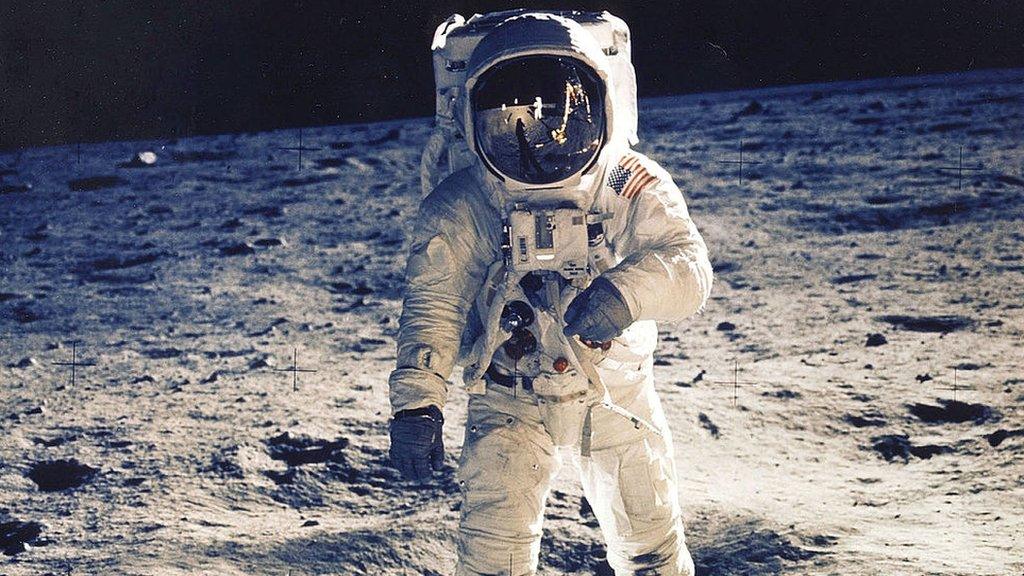
- Published7 February 2020

- Published7 March 2018
